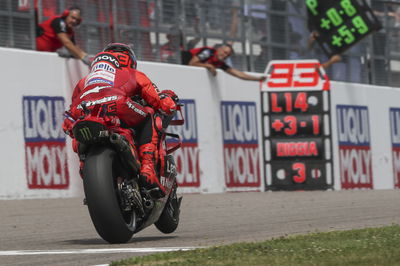Proton V5 'no Honda copy', claims Roberts.
Proton Team KR's new V5 four-stroke MotoGP bike, aimed to contest the championship next year, is not the first grand prix racer to adopt this unusual engine configuration, but team founder Kenny Roberts was quick to deny that his latest project is in any way a copy of the V5 Honda.
Proton Team KR's new V5 four-stroke MotoGP bike, aimed to contest the championship next year, is not the first grand prix racer to adopt this unusual engine configuration, but team founder Kenny Roberts was quick to deny that his latest project is in any way a copy of the V5 Honda.
"We looked at the regulations, considered the possibilities and, like Honda, decided that five cylinders was the best option," said the American, himself a former three-times world champion, "Four- and five-cylinder engines have the same minimum weight limit of 145kg - given that, why would you want to make a four?
"Once that decision had been made, the engine architecture was just obvious," he said.
The new four-stroke Proton KR is similar to the Honda in broad outline - a V-configuration with three cylinders forward, two behind. But there are significant differences even in basic architecture, with the Roberts bike adopting a narrower V-angle than the Honda's 75.5 degrees between the cylinders.
"Ours is a 60-degree vee," Roberts revealed, "We settled on that angle after computer simulations and discussions with our engineers. We believe that it makes a better envelope."
The few similarities with the Honda, however, were dictated by the rules.
"Once you've decided on five cylinders, the configuration settles itself," Roberts explained, "In F1 racing, they all use V10 engines, but nobody accuses them of copying each other."
Roberts added, however, that the team was aiming away from too much experimental work to rely on proven technology.
"We're not trying to re-invent the wheel, as we did with our two-stroke," he admitted, "It's the last thing I want. We're a small, independent engineering company, and we're not in a position to spend three years on research and development. That's why we're not looking at F1 technology, like pneumatic valves. We want to make something that can run decent from the start."










